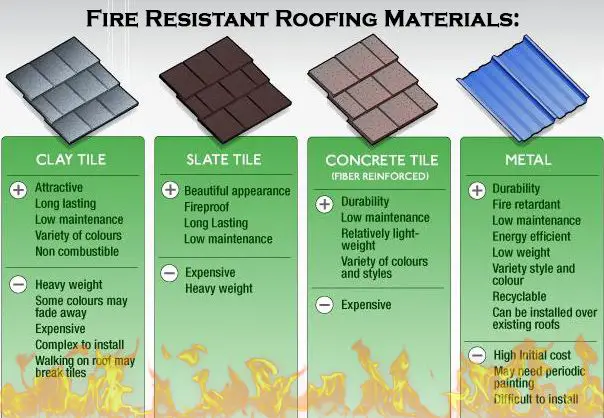How Do You Know When To Throw Out A Candle?
Candles are a beloved home decor item and source of lighting used by people all around the world. Made from wax with an embedded wick, candles release fragrance and provide ambient lighting as the wick is lit and slowly burns. Knowing when it’s time to throw out an old candle is important for effectiveness, safety, and maximizing your investment. Burning candles properly helps them last as long as possible. But even with proper care, candles have a limited lifespan. Being able to identify signs of expiration ensures you appropriately discard candles that are underperforming, damaged, or unsafe. This guide will cover techniques for determining when a candle is past its prime and ready for the trash.
Signs of Expired Wax
One of the most telling signs that a candle has expired is the condition of the wax. As candles age, the wax can become discolored, dried out, cracked, or unable to melt properly.
Discoloration in candle wax is common as the wax oxidizes over time. This can lead to an unattractive, dull or faded appearance. Candle wax can also dry out, becoming brittle and hard. This prevents the wax from melting and pooling properly when lit. Cracks may form on the surface of dried out wax.
If you notice your candle wax has become discolored, cracked, dried out, or no longer melts smoothly and evenly, it’s a good indicator that the candle wax has expired and the candle should be discarded.
Wick Condition
One of the most telling signs that a candle has expired is the condition of the wick. As candles burn, the wick can become compromised in several ways including mushrooming, falling into the wax pool, or not burning properly.
Mushrooming occurs when the tip of the wick becomes enlarged and darkened from the flame. This prevents the wick from burning cleanly and can cause more smoke. It may also lead to the wick falling over into the wax pool or no longer staying upright.
Falling into the wax pool happens when the wick can no longer stand and topples into the melted wax. This makes it impossible for the candle to burn properly. The fallen wick can also create excess smoke and soot.
A wick that struggles to stay lit or has a flickering flame that goes out frequently is another sign that the candle has expired. The wick may have become too soft or worn out from repeated burning to effectively draw wax up to fuel the flame.
Any of these wick conditions indicate it’s time to replace the candle. Letting it continue to burn with a compromised wick can create smoke, odors, and potentially hazardous conditions.
Scent Loss
One of the most obvious signs a candle has expired is when it loses its scent or the scent fades significantly. New and fresh scented candles will fill the room with fragrance when burned. But once a candle is past its prime, you may notice hardly any scent at all, even when the candle is lit.
Candles can lose their scent for a few reasons. The fragrance oils can evaporate over time, even when the candle is not in use. Heat and light exposure can also cause the scent to dissipate. And if the candle wax has fully absorbed the scent oils, there will be nothing left to fill the air with fragrance when burned.
A faint scent or no scent at all is a cue that the candle is no longer as vibrant and fresh as when you first purchased it. At that point, it’s best to replace the candle with a new one.
Burn Time
One sign your candle may have expired is if it burns down at an unusually fast rate or ‘tunnels,’ leaving unmelted wax around the outer edges. This happens when the wax close to the wick melts quickly, but the wax further away does not melt or pool out properly. Tunneling indicates the fragrance oils have evaporated from your candle and can no longer allow the heat to distribute evenly. It results in more unburned wax being left behind, reducing your candle’s burn time. If your candle repeatedly tunnels no matter how carefully you burn it, it likely should be discarded.
Appearance
A candle’s wax appearance can provide important clues about whether it may be expiring. Cloudy, frosted, or sweating wax are some warning signs. Cloudy wax occurs when the wax starts to oxidize and lose its clarity. The cloudy look is a result of moisture being trapped in the wax. Frosted or sweating wax refers to moisture beads appearing on the wax surface. This happens when the wax is exposed to humidity or temperature fluctuations, allowing condensation to form. These visual cues indicate your candle wax is breaking down and you may want to discard it even if it still holds its shape. The wax is no longer in peak condition. An expired candle with compromised wax will likely tunnel, smoke excessively, or lose its scent when burned. Pay attention to any changes in the wax’s clear, smooth sheen or texture.
Storage Conditions
Proper storage is crucial for maximizing your candle’s lifespan. Excessive heat, light exposure, and humidity can all degrade candles prematurely. Here are some storage tips to keep in mind:
Avoid Heat – Heat causes the wax to melt and the fragrance to fade faster. Do not store candles anywhere the temperature exceeds 75°F like near heating vents, appliances, or in direct sunlight.
Minimize Light – Light can react with the chemicals in scented candles and cause the fragrance to break down. Store candles away from windows and direct light sources.
Control Humidity – Humidity causes the wick and wax to absorb moisture. This can make candles harder to light and create “frosting” on the wax. Store candles in an area with less than 65% relative humidity.
By being mindful of heat, light, and moisture exposure, you can maximize shelf life and prevent premature deterioration of your candles.
Safety Issues
Candles can pose safety hazards if used improperly or kept lit for too long. Here are some key things to watch out for:
Soot Buildup
As a candle burns down, black soot can accumulate on the glass or jar holding the candle. Excess soot is a warning sign that the candle wick may be too large or the candle burned for too long. The soot is unburned carbon and can be a fire hazard.
Smoking or Flickering Flames
If the candle’s flame starts smoking or flickering in an unstable manner, this is a sign to blow it out promptly. Smoking and flickering happens when the wick gets too long or runs out of wax. The wick could overheat and start a fire.
Burn Time Exceeded
Never burn a candle for longer than the manufacturer’s recommended burn time, usually 1-4 hours. Excessive burn times can cause unsafe buildup of soot or wax pooling.
When in Doubt, Toss it Out
While it may seem wasteful to throw away candles that still have wax left, it’s always better to err on the side of caution when it comes to fire safety. If there’s any doubt about whether a candle has expired or become unsafe for use, it’s best to simply let it go and purchase a fresh, new candle.
Remember, it’s not worth risking property damage or personal injury just to eke out the last bit of fragrance from an old candle. The warning signs we’ve covered indicate the candle has reached the end of its safe usage. Ignoring these signs and continuing to burn the candle could result in smoke, flare-ups, or even a house fire.
Additionally, the smoke released from an old, expired candle can irritate eyes, lungs, and sinuses. This health hazard simply isn’t worth it. The wise, safe choice is to stop using the candle at the first indications it may be past its prime.
While throwing away candles may feel like money down the drain, your safety is priceless. So don’t take risks just to avoid wasting a candle. When in doubt about safety, err on the side of caution and say goodbye to that candle for good.
Proper Candle Use and Care
Properly using and caring for candles can extend their lifespan and prevent them from expiring prematurely. Here are some tips:
Burn Time
Never burn a candle for longer than the recommended burn time, usually 1-2 hours for container candles or 4 hours for larger pillars or jars. Burning too long can cause the wax pool to get too hot, resulting in tunneling, sooting, or the glass cracking.
Wick Trimming
Trim the wick to 1⁄4 inch before each lighting to prevent excess sooting and promote an even, full melt pool. Use wick trimmers made specifically for candles to avoid splitting or bending the wick.
Storage
Store candles in a cool, dry place when not in use. Avoid places that get hot like near a stove or in direct sunlight. Keep candles tightly covered and away from drafts to prevent dust and debris from getting into the wax.




